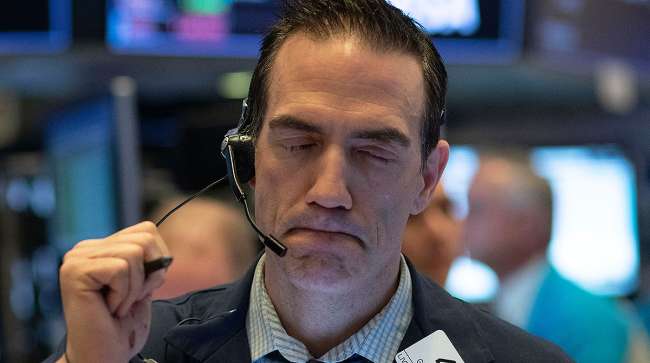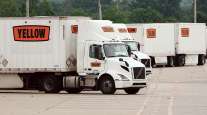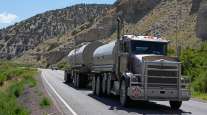Contributing Writer
Multiple Hits to Economy Likely to Trigger Recession, Analysis Shows

[Stay on top of transportation news: Get TTNews in your inbox.]
The U.S. economy amid the COVID-19 crisis is suffering under the weight of multiple factors, including lower consumer spending, falling business investment and global travel bans, according to a report from S&P Global Economics.
The corporate credit rating service forecasts that U.S. GDP will shrink 1% this quarter and 6% in the second quarter — which will send the country into a recession, it said. Economists consider two consecutive quarters of GDP declines a recession.
“We expect that the current containment and mitigation efforts put in place will directly put at risk 14% of consumer spending. Social distancing-related services such as public transportation, recreation and leisure activity (tourism, restaurants and bars) will be at a standstill through most of May,” the March 17 S&P report said.
However, GDP growth for the year might still be level, depending on the course of the virus in the U.S. and stimulus efforts from the federal government, it said. S&P previously expected GDP to grow by 1.9% this year. The report said growth could resume in the third quarter, but S&P noted that in the current environment its forecast has a higher than normal degree of uncertainty.
“It has become increasingly clear to us that COVID-19 will be a major headwind to U.S. growth in the near-term, though the inevitable impact on the U.S. economy depends largely on how long the virus lasts in America. We recognize that the path of the outbreak is very uncertain,” S&P said.
S&P’s economic forecast assumes that the coronavirus outbreak peaks in May.
Trucking and transport will get some cushion from the virus-sparked jump in food delivery and household goods demand.
“Truck drivers are doing some incredible work right now,” said John Wilbur, CEO of Roadmaster Group, a Glendale, Ariz., motor carrier.
Wilbur said he learned the importance of running a lean organization that can ramp up or down quickly to meet freight demand during the last recession.
“It’s going to be hard, but you have to talk to your customers and come to grips on what demand will be like over the next few months,” Wilbur said. “You need to be able to match your fleet to your freight basket.”
Effects of #COVID19 now seem likely to push the global economy into recession, with full-year growth of just 1-1.5%. Combined with the oil-price collapse and capital markets volatility, this could mean a surge in defaults among borrowers we rate: https://t.co/RxZolagkeh pic.twitter.com/sTg5iFEEhd — S&P Global (@SPGlobal) March 17, 2020
His fleet, which works for the military and also transports hazardous waste, has business for now, but he expects that to dip as military exercises are delayed and manufacturing stalls.
He added that the COVID-19 pandemic highlights how hard the trucking industry works to keep America stocked and should make consumers more aware “that the truck driver is the backbone of the American economy.”
“That’s how those grocery shelves are being restocked every day,” Wilbur said.
Meanwhile, another report issued this week said the pandemic is likely to have lasting effects on trucking by altering supply chain patterns.
While office workers can shift to home and remote locations, “it’s a different situation for manufacturers because, despite investments in automation, reducing the need for staff on assembly lines, they still need to receive raw materials,” ABI Research said in a report on the economic effects of the pandemic.
Manufacturing companies, among the biggest truck users, will need to audit their operations to understand risk exposure better.
“To mitigate supply chain risks, manufacturers should not only not source components from a single supplier but also, as COVID-19 has highlighted, shouldn’t source from suppliers in a single location,” said Michael Larner, principal analyst at ABI Research.
Want more news? Listen to today's daily briefing:




